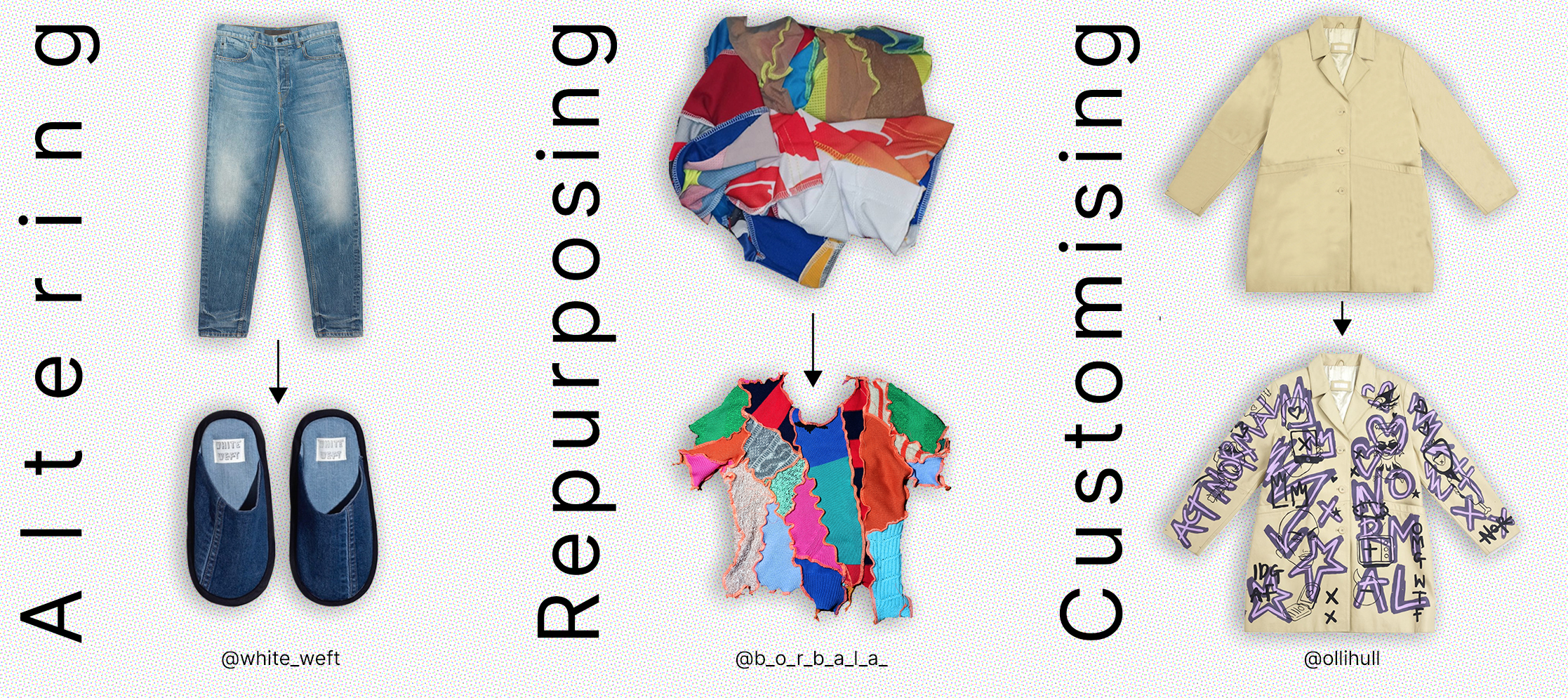
Types of Upcycling
Alterist has a wide range of designers, each with their own style, techniques and flair. So to give you a more holistic view of what upcycling is, we’re going to explain the five different techniques.
The definition of upcycling is to reuse discarded clothing, objects, or materials in their current form, it is re-imagining these underutilised or discarded materials and creating something new and unique. However, there are different ways a designer can upcycle.
So to give you a more holistic view of what upcycling is, we’re going to explain the three different techniques; altering, repurposing and customising.
Altering
Transforming a garment into something new. For example, you might take a pair of jeans and turn them into a pair of shoes, or take an old dress and turn it into a handbag.
Repurposing
This is where the designer uses discarded materials, cut offs and scraps to create a new garment.
Customising
Customisation can take two main forms:
-
Embellishment
Decorating and adding custom details to a garment such as beading, embroidery, patchwork or crochet. -
Printing/Painting
Transforming the garment into something new by painting, drawing or printing on it.
3rd May 2022